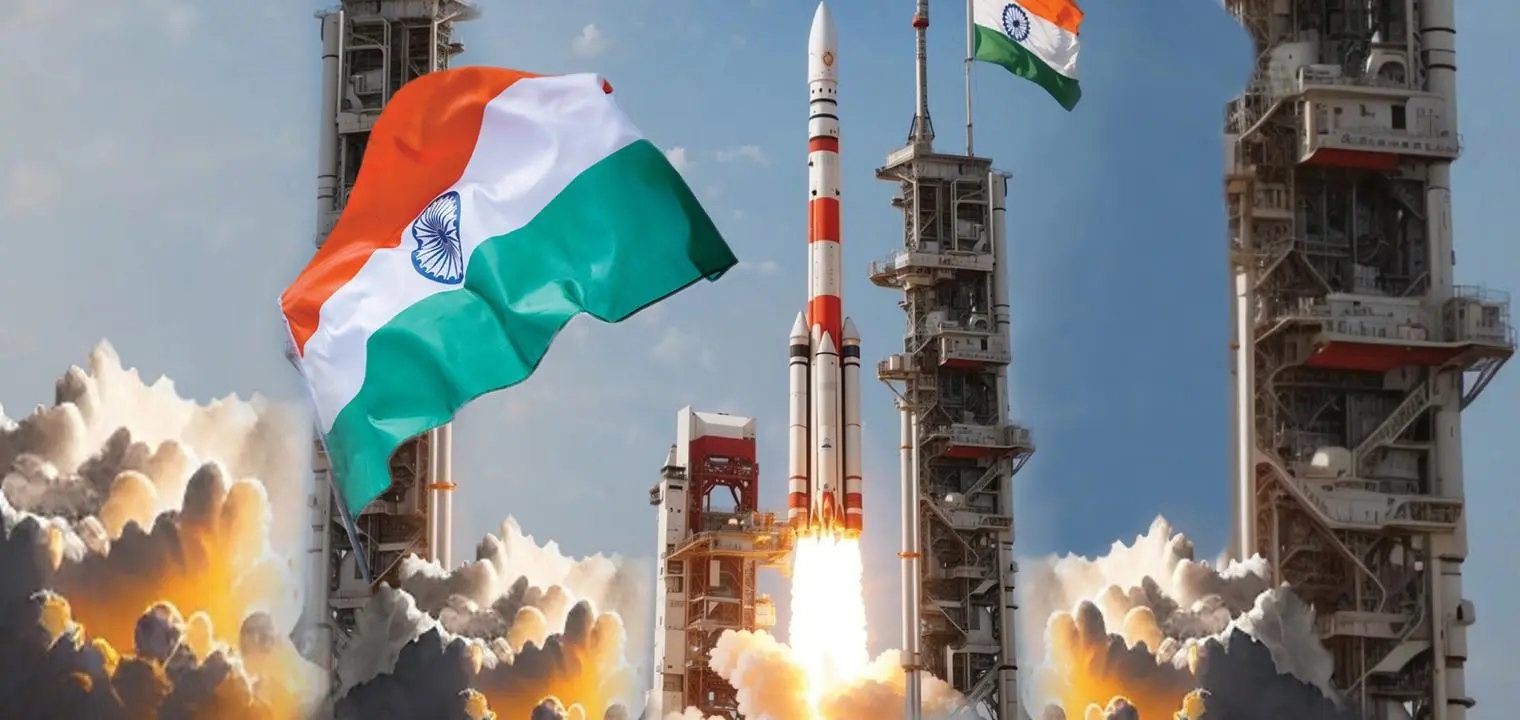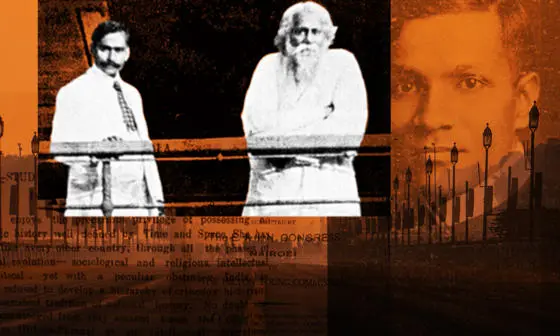Why does India want to be a space power? Chandrayaan-3 and the politics of India’s space programme

Contents
On 14 July 2023, the Indian Space Research Organisation (ISRO) launched a rocket from the Satish Dhawan Space Centre in Sriharikota in southern India that sent India’s third lunar exploration mission, Chandrayaan-3, consisting of a propulsion module, a lander and a rover. The lander touched down on the surface of the moon on 23 August 2023, making India the fourth country in the world, after the United States, the Soviet Union and China, to carry out a soft landing on the moon.
According to ISRO, the three main goals of the mission were: 1) achieving a soft landing on the lunar surface; 2) realising rover roving on the lunar terrain; and 3) carrying out in-situ experiments.
After landing near the south pole region, Chandrayaan-3’slander deployed a rover to perform in-situ analysis of the lunar surface. As outlined by ISRO, the lander and the rover have scientific payloads to explore the lunar surface, collect data and perform various experiments. From a scientific point of view, such a mission is important because the south pole region remains underexplored, and thus has the potential for scientific discoveries. For example, it is believed that this region of the moon might contain deposits of ice water. The possibility of the presence of ice water on the moon has already attracted the interest of other space agencies and private companies, especially since the extraction and use of water from the moon could support the feasibility of prolonged lunar missions and serve as a potential stepping stone towards Mars and other missions venturing deeper in space.
But while the possibilities of such discoveries hold great potential for whichever nation makes them and can contribute to the advancement of scientific knowledge, as we shall see, scientific research is just one of the reasons driving India’s vigorous space endeavour.
Science alone is not usually sufficient to explain such activities. Broader political considerations and strategic dynamics may be equally or even more important drivers behind India’s forays in space and the Chandrayaan programme in particular.
More specifically, Chandrayaan-3 is not India’s first attempt at soft landing on the moon. It is essentially a follow-up mission to Chandrayaan-2, which was launched in July 2019 and was designed to explore the lunar surface near the south pole. Chandrayaan-2consisted of an orbiter, a lander and a rover, but it was considered a partial success. Although the lander was successfully separated from the orbiter, due to a communication breakdown it had a hard landing 500 metres from the designated site on the lunar surface in September 2019. However, since 2019 the orbiter has continued to operate successfully, providing valuable data about the moon, and it will also support the latest mission.
Chandrayaan-3 also comes roughly 15 years after India’s first lunar exploration mission, Chandrayaan-1, which was launched in October 2008 with the goal of mapping the lunar surface. Apart from five Indian payloads, the spacecraft carried instruments from NASA, British, German and Swedish research institutes (through the European Space Agency), and Bulgaria. As such, the mission was also an example of international scientific cooperation. Eventually, Chandrayaan-1 encountered technical hurdles when ISRO lost communication with the spacecraft and the mission had to end prematurely. Still, it was considered a remarkable success, not least because data gathered from one of the NASA instruments carried on the Chandrayaan-1 mission found clear evidence of water molecules on the moon.
Explaining Chandrayaanand India’s space programme
Despite the fact that India has one of the world’s oldest space programmes, established in the early 1960s, the focus has been on the use of space for socio-economic development. To this end, priority was given to the development of space applications, such as communications, remote sending and meteorology, that could provide tangible practical benefits tailored to the needs of a developing and large country. This developmental rationale has been associated with the vision of Dr Vikram Sarabhai, who is considered the ‘‘father’’ of India’s space programme and was one of the most influential and respected scientists in post-independence India. Although Sarabhai was a keen supporter of the use of space technology as a way of leapfrogging some of the stages of social and economic development, he was famously against highly visible space stunts for the sake of prestige and news headlines that offered little in economic and social terms.
It was against this backdrop that Chandrayaan-1, India’s first ever space exploration mission, signalled a shift towards highly visible space projects, which seemed to be at odds with India’s traditional developmental rationale. Further reflecting this reorientation of India’s space effort, in addition to the Chandrayaanlunar programme, other notable examples include the 2013 Mars Orbiter Mission (MOM), also called Mangalyaan, and plans for India’s first human spaceflight mission, the Gaganyaan programme, which is targeted to be launched within the next few years.
As far as India is concerned, the recent focus on space exploration can largely be seen as a response to China’s emergence as a great space power.
The China factor and the quest for great power status in space
What explains this change in India’s space programme? To be sure, the potential scientific benefits of lunar missions can be significant. What is more, I have long argued that scientific internationalism has been a key feature of space activities from the beginning of the Space Age. However, science alone is not usually sufficient to explain such activities. Broader political considerations and strategic dynamics may be equally or even more important drivers behind India’s forays in space and the Chandrayaan programme in particular.
A number of observations are worth making here. First, it is useful to recognise from the outset that international imperatives have rendered space a complex domain of international relations amid a surge of interest in the use of space for military, civilian and commercial purposes. As far as India is concerned, the recent focus on space exploration can largely be seen as a response to China’s emergence as a great space power, manifested not only in a series of remarkable Chinese space achievements, but also in the ways in which Beijing uses its space programme as a foreign policy and diplomacy tool. While India’s competition with China in space increasingly involves a military component, high-profile exploration projects are part of the contest for leadership, influence and soft power in Asia, contributing to the notion of an Asian space race.
Highly visible technoscientific projects serve as markers of power, status and modernity, a practice rooted in the 19th century.
Second, and related to the previous point, underlying India’s interest in lunar exploration is its great power aspirations. Highly visible technoscientific projects serve as markers of power, status and modernity, a practice rooted in the 19th century when technoscientific advancement emerged as a standard of "civilisation" demarcating the "society of civilised states" from non-European societies through a "techno-scientific orientalist" discourse. In this way, the space programme can be understood as a powerful symbol of postcolonial India’s modernity, statehood, and national prestige. From this perspective, the pursuit of the Chandrayaan lunar programme is part of India’s effort to climb up the ladder to the top tier of the hierarchical global space order and have a bigger "seat at the table’’ of space affairs.
Domestic influences
The role of domestic politics should also be acknowledged. For example, India’s space programme is an important source of national pride and prestige, and thus Indian leaders, including the current Prime Minister Narendra Modi, are keen to leverage the country's achievements in space to bolster the legitimacy of their governments whenever an opportunity arises. At the same time, powerful institutions, such as ISRO, have their own organisational and bureaucratic interests that compel them to push for highly visible projects to gain political approval. Finally, apart from foreign policy and military spin-offs due to the inherent dual-use nature of space technology, Chandrayaan-3 will help to inculcate and attract young talent in space science and showcase India’s vigorous private space sector, as this is the first time that ISRO has partnered in a major mission with the private space industry.
Consequently, and given the technical problems experienced by India's previous lunar mission, the stakes for Chandrayaan-3could not be higher. Regardless of the outcome of Chandrayaan-3, however, the success of India’s lunar programme hinges on more than simply scientific gains, encompassing broader political and strategic considerations that will continue to animate India’s space ambitions.
Download a PDF version of this article




